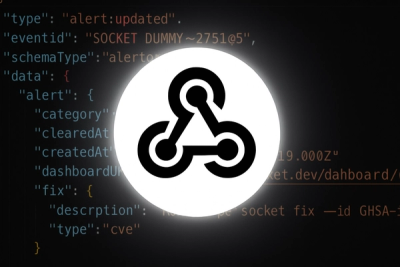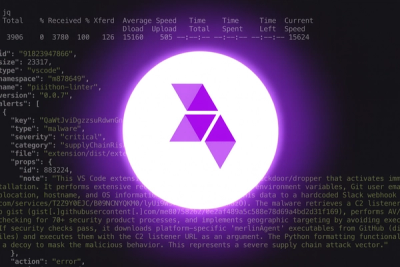
Product
Introducing Webhook Events for Alert Changes
Add real-time Socket webhook events to your workflows to automatically receive software supply chain alert changes in real time.
@nylas/react
Advanced tools
React components for Nylas Scheduler
Install Nylas React Components via npm:
npm install @nylas/react@latest
or yarn
yarn add @nylas/react@latest
The following example adds the Nylas Scheduler Editor and Scheduling components to your React app.
⚠️ Important: Make sure to replace the
NYLAS_CLIENT_IDwith your Nylas Client ID. Your Nylas Client ID can be found in your app's Overview page on the Nylas Dashboard.
import { BrowserRouter, Route, Routes } from "react-router-dom";
import { NylasSchedulerEditor, NylasScheduling } from "@nylas/react";
function App() {
// Get the configuration ID from the URL query string
const urlParams = new URLSearchParams(window.location.search);
const configId = urlParams.get("config_id") || "";
return (
<BrowserRouter>
<Routes>
<Route
path="/"
element={
<div>
<a href="/scheduler-editor" className="button">
View Scheduler Editor
</a>
<NylasScheduling
configurationId={configId}
schedulerApiUrl="https://api.us.nylas.com"
/>
</div>
}
/>
<Route
path="/scheduler-editor"
element={
<div>
<NylasSchedulerEditor
schedulerPreviewLink={`${window.location.origin}/?config_id={config.id}`}
nylasSessionsConfig={{
clientId: "NYLAS_CLIENT_ID", // Replace with your Nylas client ID from the previous
redirectUri: `${window.location.origin}/scheduler-editor`,
domain: "https://api.us.nylas.com/v3", // or 'https://api.eu.nylas.com/v3' for EU data center
hosted: true,
accessType: "offline",
}}
defaultSchedulerConfigState={{
selectedConfiguration: {
requires_session_auth: false, // Creates a public configuration which doesn't require a session
scheduler: {
// The callback URLs to be set in email notifications
rescheduling_url: `${window.location.origin}/reschedule/:booking_ref`, // The URL of the email notification includes the booking reference
cancellation_url: `${window.location.origin}/cancel/:booking_ref`,
},
},
}}
/>
</div>
}
/>
</Routes>
</BrowserRouter>
);
}
export default App;
To create a Scheduling Page from the Scheduler Editor, you'll need a working Scheduler UI. To do this, run a local server to host your Scheduler Editor and Scheduling Pages.
Navigate the root directory of your project and run the following command.
npm run dev -- --port <PORT>
After you run the command, open your browser to http://localhost:<PORT>/scheduler-editor to see your Scheduler Editor and create your first Scheduling Page.
For a complete walkthrough on setting up Scheduler can be found at https://developer.nylas.com/docs/v3/getting-started/scheduler/, with the complete code available on GitHub.
FAQs
React components for Nylas Scheduler
We found that @nylas/react demonstrated a healthy version release cadence and project activity because the last version was released less than a year ago. It has 3 open source maintainers collaborating on the project.
Did you know?

Socket for GitHub automatically highlights issues in each pull request and monitors the health of all your open source dependencies. Discover the contents of your packages and block harmful activity before you install or update your dependencies.

Product
Add real-time Socket webhook events to your workflows to automatically receive software supply chain alert changes in real time.

Security News
ENISA has become a CVE Program Root, giving the EU a central authority for coordinating vulnerability reporting, disclosure, and cross-border response.

Product
Socket now scans OpenVSX extensions, giving teams early detection of risky behaviors, hidden capabilities, and supply chain threats in developer tools.